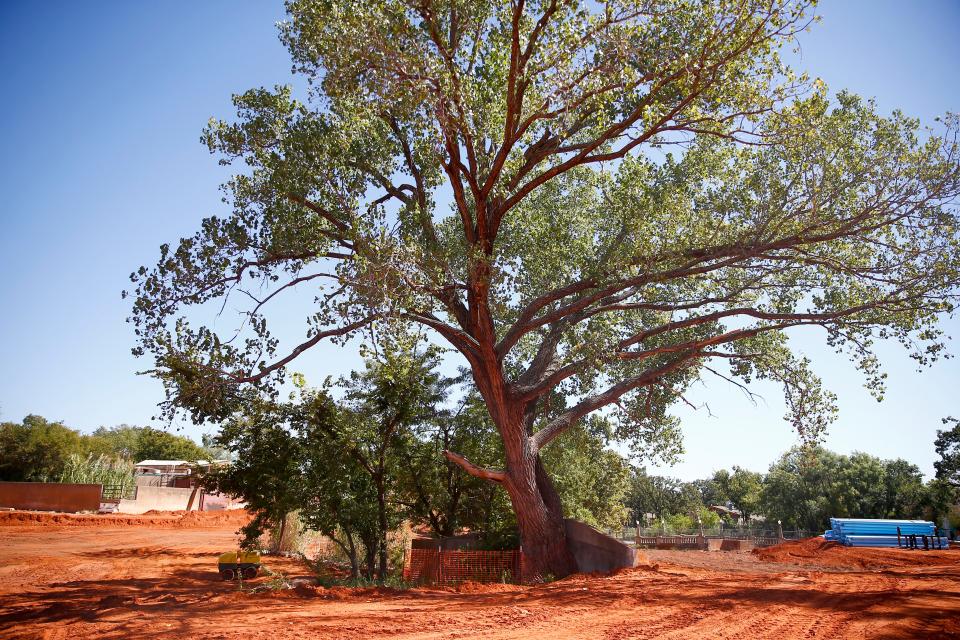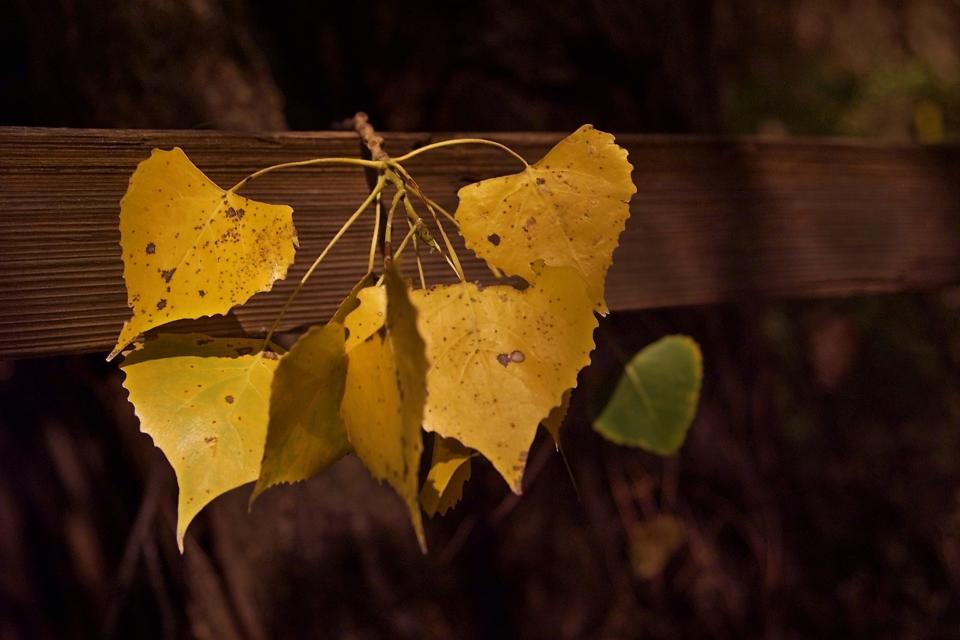All they are is fluff in the wind: What to know about those fuzzy flying cottonwood seeds
Dear California transplants and any other newcomers to Oklahoma from west of the foothills of the Rockies: Those big white fluffs floating everywhere? Pollen. Wait’ll you see the bees.
We kid! Cottonwood fluff ― from cottonwood trees, females — is just so common this time of year, most of us natives don't pay much attention to it. The fluff flies from late April to early May into June and July at the latest.
Those are seeds, millions of them from each tree, which can grow 100-plus feet tall and nearly as wide. Those cottony fibers help them travel somewhere the seeds can find purchase.
Cottonwood fluff is harmless, unless you're allergic. But it can cause your air-conditioning to lose efficiency, or even fail, if you let the fluff accumulate on your outside AC unit and the condenser overheats. And they can yuck up a swimming pool.
HOIST ONE! Another brewery and taproom will drink from downtown Edmond's success, and pour into it
How native Okies, with tongue in cheek, explain cottonwood fluff to newcomers

This short primer on cottonwood fluff started with this innocent question seen the other day on the Nextdoor app: "We are new to Oklahoma. What is the white, fluffy stuff in the air lately?"
Oh, the good-natured snark that followed:
"Freeze dried snow."
"The devil's dandruff: cottonwood."
"Angel fluff!"
"It is just the shredded paper from all of the new laws that the State Government was going to pass to help the citizens of OK by the end of next week that isn't happening!!!"
Tough Okie crowd!
Here's the Okie lowdown, from Oklahoma State University Extension.
DRIVE-THRU GROCER: JackBe opens a second curbside, drive-thru grocery store, and a third one is in the works
Plant profile, facts, habitat, ecology of cottonwood trees in Oklahoma
Common name: Eastern cottonwood.
Origin: North America.
Duration: Perennial.
U.S. distribution: Eastern half of the country to the foothills of the Rocky Mountains.
Distribution in Oklahoma: Statewide.
Sun preference: Full.
Habitat: Sandbars, floodplains, and edges of streams, ponds and reservoirs.
Soil preference: Adapted to most soil conditions, but prefers wet, barren soils.
Notes: Fast grower. Weak wood.
EVICTION HELP: Legal Aid is offering attorney help to renters facing eviction in two OKC ZIP codes
Pros and cons of cottonwood trees, according to HGTV

Here are some cottonwood tree facts from HGTV:
Pros of cottonwood: "The leaves have flat stems, so they shimmer and rustle in the wind. The effect is eye-catching and distinctively attractive. The tree offers strong fall color, with leaves fading to glowing shades of gold. In the wild, cottonwood is one of the fastest trees to colonize unplanted areas, making it a solid choice for areas prone to flooding and soil erosion.
In forestry: "The National Forest Service uses it to stabilize stream banks and act as a natural waterway filtration system to reduce sedimentation. It tends to colonize and form groves that act as natural windbreaks. In areas with enough space, such as a ranch or acreage, a cottonwood makes a beautiful addition to a landscape."
Cons of cottonwood: "The cotton that helps carry seeds on the breeze can be a nuisance, especially when it sticks to window screens, blocks air conditioning units or coats a swimming pool.
Cottonwood trouble and danger: "The rapid growth that makes some folks cheer for cottonwood is also a negative because the wood is brittle, leading to breaking branches and plenty of twigs to collect before mowing. As a cottonwood tree grows, large branches often break in windstorms, which can lead to property damage."
HOME SALES: How April home sales in Oklahoma City came slinking along
How to clean cottonwood fluff off of your outside air-conditioning unit

Here are some tips for cleaning your AC of cottonwood fluff and other material that can harm it, from Suntech Heat & Air Conditioning in Oklahoma City.
"Clean your condenser coils. To do this, turn the unit off, get a garden hose with a spray nozzle and gently wash the coils until they are clear of grass, fur, cottonwood, and other debris and the water running through the coils is clean and no longer contains dirt or debris."
"Clear away any grass, shrubs, and debris from your condenser unit and vents. A two-foot radius is usually considered the proper amount of space around an outdoor unit. This allows the maximum airflow around the unit and helps keep everything running smoothly and efficiently."
"Once you have cleaned around the unit, carefully remove the grill cover and remove any debris that has found its way inside. It is a good idea to turn your AC unit off when mowing to help keep debris from getting sucked into the coils."
"Check the coolant lines, which are the tubes or pipes that carry the refrigerant from the evaporator inside your home to the condenser outside of it. These lines should also be free of debris and covered with foam insulation, which allows them to save as much energy as possible."
"Check that the lines and foam insulation are in good condition and that the foam does not need replacement.
SIGN UP: Weekly e-newsletter, Real Estate With Richard Mize
Senior Business Writer Richard Mize has covered housing, construction, commercial real estate and related topics for the newspaper and Oklahoman.com since 1999. Contact him at rmize@oklahoman.com. Sign up for his weekly newsletter, Real Estate with Richard Mize.
This article originally appeared on Oklahoman: Cottonwood tree fluff flies in Oklahoma: What to do about the seeds

